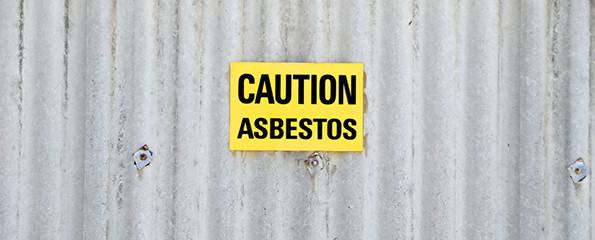Asbestos report highlights danger to women
Women are likely to form a significant proportion of the ‘third-wave’ of people with asbestos-related diseases, according to the findings of a new research report ‘The Asbestos Narratives’.
Conducted by Southern Cross University, the report investigated the social and psychological impacts of asbestos disease. It also led to the development of an interactive online community, aimed at helping reduce the impacts for the sufferers, their families and carers.
The project has been funded by Comcare through the Wave 2 of the Asbestos Innovation Fund. The researchers also worked closely with Slater & Gordon’s Asbestos Practice, the Asbestos Diseases Foundation of Australian (ADFA) and the vTeam (managed private social networks).
Associate Professor Rick van der Zwan, director of the University’s Regional Initiative for Social Innovation and Research (RISIR) and project leader, said more than 60 men and women shared their experiences of living with an asbestos-related diagnosis during the research.
“We found through this project that there are several distinct, but related communities each facing multiple challenges,” Professor van der Zwan said.
“Women are likely to form a significant proportion of the emerging third wave of exposure to asbestos and may suffer considerable hardship as a result.”
Professor van der Zwan said approximately 3500 people died in Australia from asbestos-related disease each year. An estimated 40,000 people will eventually die.
“The medical effects of this disease are well researched, but little has been known about the social, psychological and economic implications for those diagnosed, their carers and their families,” he said.
“Exposure to asbestos can result in a range of debilitating diseases, all of which can leave people physically and socially isolated.”
One of the key aspects of the project was the development of the ‘Dusted Community’, an online peer-to-peer support group for individuals with a diagnosed asbestos disease, for their carers and for their families.
“What we found was that people with asbestos-related diagnosis, and their carers, were often socially isolated and looking for a way to connect with people in similar situations, regardless of their location. This was particular important for people in regional areas, who had limited access to formal support groups,” he said.
“An important part of our research showed that emerging technology has the potential to reduce the social impact of an asbestos-related disease.”
Professor van der Zwan said it was hoped the findings of the report would inform policy makers and the future provision of services and support.
Mr Barry Robson, president of the Asbestos Diseases Foundation of Australia, whose members contributed to the research, welcomed the findings in the report.
“This study highlights the plight of victims who are in isolated areas, plus their families and carers who are also impacted by somebody with an asbestos-related disease. With the help of other people with the same problems, they can get together via the internet and support each other,” Mr Robson said.
(Source: Southern Cross University)
Dates
Created by:

 Login
Login














